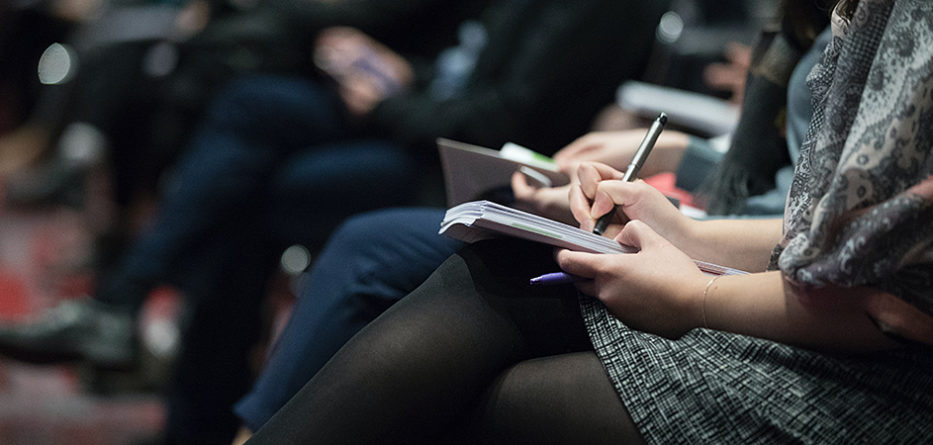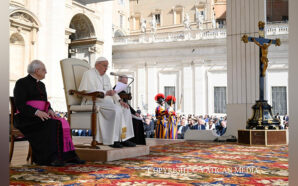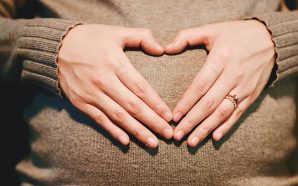An experienced Vatican journalist texted me when the Pope’s World Communications Day message was released over the weekend. She was bowled over by it and wanted to know if I knew who had had a hand in it (I didn’t). “This message is just so much more concrete, real, and knowledgeable about the business,” my friend wrote. “It’s not just pious platitudes.”
The business she meant was journalism, and she was right: this year’s message shows an intimate understanding of what the business should be and do, and what stops it being and doing what it should.
“As an account of reality,” Francis writes, journalism “calls for an ability to go where no one else thinks of going: a readiness to set out and a desire to see: curiosity, openness, passion.” He likens this stance to what led the Baptist’s disciples at the opening of John’s Gospel to set out after Jesus; and then, when he turned to look at them, to blurt out: “Where do you live?”
“Come and see,” Jesus says.
You have to come. You have to see.
The Pope thanks those who do this, and he knows who they are: not just reporters, but camera operators, editors, and directors, who sometimes risk their lives, he says, to bring us to the edges of human existence, documenting the oppression and injustice of the poor, the overlooked wars, the hidden suffering. And not just in far-off places geographically.
Here in the UK, the BBC’s Clive Myrie recently spent 10 days inside a London hospital and mortuary recording the bone-shattering weariness of health workers engulfed by a daily tide of death. Hannah, a woman who has worked in the mortuary for 20 years, broke down on camera because no one outside had ever asked her how the endless conveyor belt of bodies created by the pandemic had made her feel; people don’t want to talk about the deaths, she said.
Myrie, too, was criticised by viewers for spending precious news time with the hidden people, the cleaners and gravediggers, embalmers and morticians, “the folk who’ve had to ‘keep calm and carry on’ while most of us have been able to shelter from the storm,” as he put it. He is proud he gave them a voice, that he cut the gap between those giving their all for others and the rest of us, cocooned and confined in our homes.
“’Come and see’ is the simplest method to get to know a situation,” writes Francis in his communications day message. “It is the most honest test of every message, because, in order to know, we need to encounter, to let the person in front of me speak, to let his or her testimony reach me.”
Best of all is to come and see for yourself; but the next best of all is to allow another you trust to do it for you, and report back to you.
After spending time with Jesus, John sought out Nathaniel to tell him the one they had so long sought was now among them, and Nathaniel gets up at once to go find him. It’s like that West Wing flashback, when Josh tells Sam Seaborne he is going to check out the candidate Bartlett and will let him know if he is The Real Thing. In the next scene, when Sam sees Josh through the window of his corporate conference room, thumbs raised and beaming, it’s all he needs to chuck in his high-paid job there and then.
“Lord, teach us to move beyond ourselves, and to set out in search of truth,” Francis prays at the end of his message. At the close of Let Us Dream, Francis asks us to “de-centre and transcend.” “To get out of the labyrinth we have to leave behind the ‘selfie’ culture and look at the eyes, faces, hands and needs of those around us,” he writes, “and in this way find, too, our own faces, our own hands full of possibilities.”
What happens, though, if you stay within the labyrinth, dizzy from your own reflection? You detach more and more from reality, like the anti-vaxxers and the QAnon folk or the followers of Archbishop Viganò, or the young partygoers who think they won’t get the virus and don’t care whom they infect. They descend into arrogance and stupidity—the black hole of the isolated conscience Francis describes in Let Us Dream.
The point about the internet, as the Pope says in his communications message, is that it swings both ways: it puts more eyes on reality, so we can report more of what we see, in real-time. But it also can produce a fast-flowing stream of deepfake, of manipulated and paid-for “news,” as well as what the Pope calls “a reportage created in newsrooms, in front of personal or company computers and on social networks, without ever ‘hitting the streets,’ meeting people face to face to research stories or to verify certain situations first hand.” As a result, he notes at the start of the message, real reporting is giving way to tendentious narrative, and as a society we become less and less capable of grasping “the truth of things and the concrete lives of people.” This is the labyrinth.
His solution? Be critical, which is a very different matter from being suspicious and distrustful. Be discerning: take responsibility “for contents both sent and received.” All of us are answerable, he says, for what we share and how we say it; and for how we respond to fake news, exposing it, witnessing to the truth.
A good start was Amanda Gorman telling Anderson Cooper that she saw her inauguration poetry mission as one of purifying language, restoring dignity and meaning to words that had been brutalised and instrumentalised. By taking responsibility for the degradation in the news climate that surrounds us, we regenerate civility, shoring up trust in the encounter and sharing of truth that are the bedrock of our common life.
All of this assumes that truth is knowable, findable, touchable—which we know by faith it is. Christianity is not a school of thought or a moral code to live by, but an event that becomes a news story we tell, over and over, in each generation, through the testimony of those before us that becomes alive in us. The Pope quotes St Augustine: “We have books in our hands, but the facts before our eyes.”
Two men appear to be praying. One stands in front of the Speaker’s chair in the Capitol he stormed on Jan 6, noisily listing all the things they have done, claiming divine inspiration for them. The other, an elderly Jesuit by the side of President Biden two weeks later, says he comes to God “in need—indeed on our knees,” to confess a nation’s failure and to beg for wisdom. Which of them was praying to the true God?
“Teach us to go where no one else will go,” Francis prays at the end of his message, “not to be distracted by the superfluous, to distinguish deceptive appearances from the truth.”
Journalists are told to “show, not tell.” They need the freedom and means to do that, so others can “come and see.”
Austen Ivereigh is the author of two major books on Pope Francis, The Great Reformer and Wounded Shepherd. His most recent project was a collaboration with Pope Francis on the book, Let Us Dream: The Path to a Better Future. It was released in December 2020 by Simon & Schuster.
With thanks to Where Peter Is and Austen Ivereigh, where this article originally appeared.








